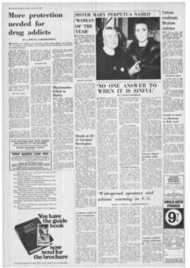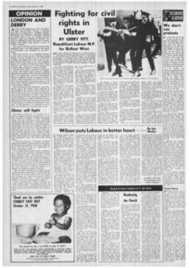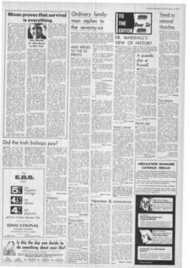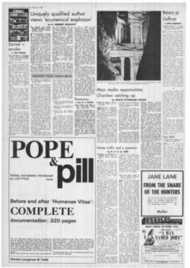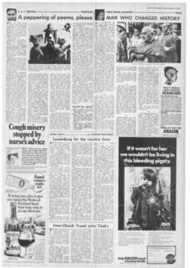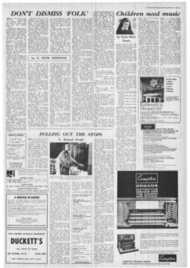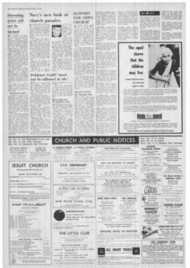Page 6, 11th October 1968
Page 6
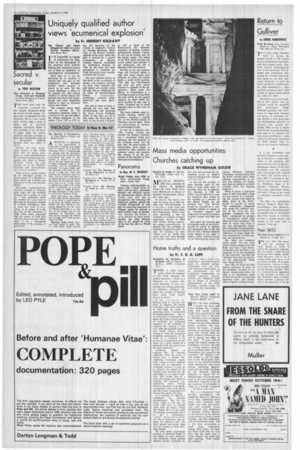
Report an error
Noticed an error on this page?If you've noticed an error in this article please click here to report it.
Tags
Share
Related articles
Shake-up For Clergy In London
Westminster Ecumenical Lectures
Death At The Beda
Ecumenical Authority
Cotswold Vicar Who Inspired Ecumenism
Uniquely qualified author views 'ecumenical explosion'
by Fr. HERBERT KELDANY
The Church and Man's Struggle for Unity by Canon Herbert Waddams (Blandford Press 36s.) IT IS impossible to engage in ecumenism for long, either at the theological or the practical level, without finding that historical factors are at least as important as contemporary circumstances.
Since most of us are not historians we are grateful to anyone who can give us the perspective and hindsight without which progress is bound to be slow. On this Canon Waddams is likely to be popular not only among students of church history but perhaps even more with housegroups and other assemblies anxious to chart an informed course next winter.
This compact survey helps one to account for the ecumenical explosion which is a feature of our age and reflects the unique experience of the author. From 1945 to 1959 he Was 5th secretary of the Church of England's Council for Foreign Relations, which took in all Roman Catholic relations in his time; today this field is covered by a special Commission on Roman Catholic relations established by Archbishop Ramsey in 1964. In one sense this body anticipated at Lambeth the Unity Secretariat more recently created in the Vatican.
The most valuable feature of this hook is the co-relation of secular and religious strivings for unity. They interlock and pull against one another down the ages and are influenced by all kinds of non-theological factors — language, psychology, national pride, power-lust and sheer ignorance.
We tend to think of them as affecting the past only, thus foreshortening and distorting the issues. Canon Waddams shows us that they are all in play today. He shows them at work in the Eastern Churches as well as those of the Reformation. His informed treatment of Roman Catholic developments includes Vatican H and cah be faulted only by the finicky reader. The action of the Holy Spirit between and across nations and churches is not emphasised, but this is theology rather than history.
Writing on the split between Pope and Patriarch which is only now being healed after centuries of strain, the Canon makes a point worth quoting. "The idea that Christendom was once one great united Church is a figment of the imafination. Much more the history of Christendom is a travailing in pain to bring forth the unity which its own gospel requires, an effort which has never reached its end, and in which Christians are as much engaged today as they were in the past."
The book includes some attractive pictures, useful appendices, including a topical one on the World Council of Churches, and an index. There are unfortunately no statistics or chronological tables.
It ends on a hopeful note. "The Vatican Council has brought the Roman Catholics into a movement which now embraces the vast majority of the Christian world. For the first time the main bodies of Christendom have begun to concentrate their attention on common action and common life, instead of on the promotion of the interests of their own separate institutions."
Panorama
blog comments powered by Disqus



